St Mary’s Church, Whitby
Arguably the finest Halloween graveyard of them all lies atop a flight of 199 stone stairs, up which the dreadful hound of Dracula was sent bounding by Bram Stoker. Sadly most of the tawny-coloured tombstones have been licked illegible by the wind, but a few remain. Most visitors seek out the Huntrodd memorial, dedicated to a couple who were both born on 19 September 1600 and both died on the same day 80 years later. If visited at optimum times – during a screeching storm – you will need to see the headstone of William Storr, who died in the 1861 lifeboat disaster. It was, of course, the wreck of a Russian freighter on the rocks below St Mary’s, witnessed by Stoker, that inspired the classic scenes in chapters six and seven of Dracula. Best read by candlelight with your back against a tombstone.
Accommodation: YHA Whitby is the best location for visiting St Mary’s. Rooms from £39.
St Pancras Old Church, Somers Town, London
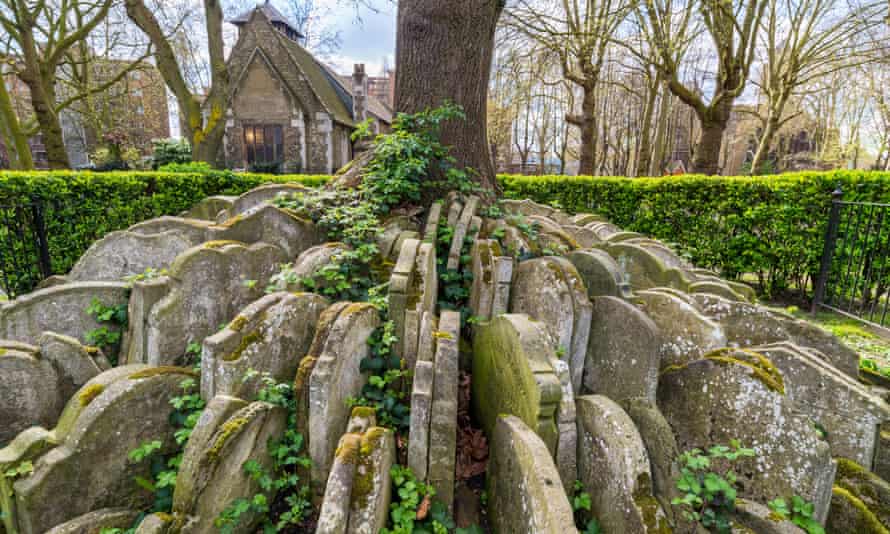
Vampire connections are obligatory in the better sort of graveyard and Old St Pancras churchyard is no exception. Here lies John Polidori, the man who first uncovered the thrilling scandal of blood-sucking aristocrats and innocent female beauties in The Vampyre (1819). That tale started life at the same candlelit supper that inspired Mary Shelley’s Frankenstein. Shelly’s mother, Mary Wollstonecraft, has a memorial here. Perhaps the most atmospheric spot is the corner known as The Hardy Tree, where dozens of gravestones have been stacked around an old ash tree.
Aaccommodation: St Pancras YHA has rooms for up to four from £69.
Greyfriars Kirkyard, Edinburgh
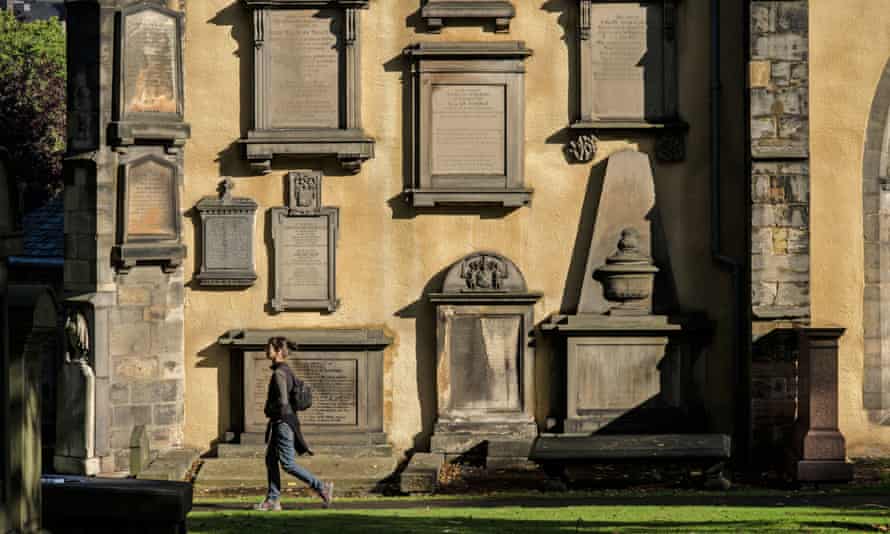
A few years before his vampiric literary tendencies emerged, Polidori was a medical student in Edinburgh (his thesis was on sleep-walking), and no doubt he dissected corpses provided by bodysnatchers. At the wonderful Greyfriars Kirkyard, a 10-minutes walk from Princes Street, can be seen the mortsafe, a kind of iron grille that was locked over graves for at least six weeks, until the decomposing corpse was safe from the anatomists’ minions. Stroll around the gothic collection of dark stone memorials and obelisks at dusk. Take care near the George Mackenzie mausoleum: there’s a poltergeist that scratches. Several names on gravestones are said to have inspired characters in Harry Potter books. Another resident is William McGonagall, not Scotland’s finest poet: “For the stronger we our houses do build; The less chance we have of being killed.”
Accommodation: To get you in the mood before the five-minute walk to the graveyard, it has to be House of Gods. Rooms from £107.
Southern Necropolis, Glasgow
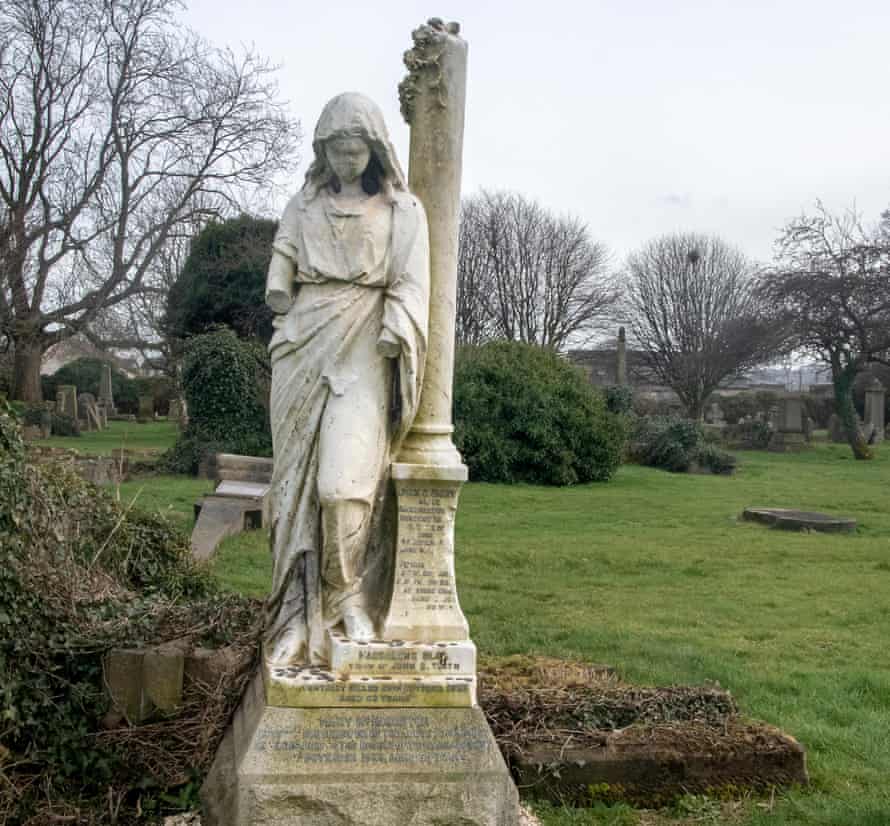
On 23 September 1954 hundreds of schoolchildren, armed with sticks and penknives, descended on Glasgow’s impressively atmospheric Southern Necropolis determined to hunt down the Gorbals Vampire, a horrible monster whose iron teeth, they claimed, had exsanguinated two classmates. Despite three days of searching and many near misses, the monster eluded them. The hysteria subsided, but the evil bloodsucker was never caught, hence a stroll here can be a little spine-tingling, not least when you spot the White Lady, the statue of Magdalene Smith, who died in a tramcar accident in 1933. Reliable informers have said that, as you pass her by, the head of the statue turns.
Accommodation: Great views of the necropolis from the historic Cathedral House. Rooms from £120.
Abney Park, Stoke Newington, London
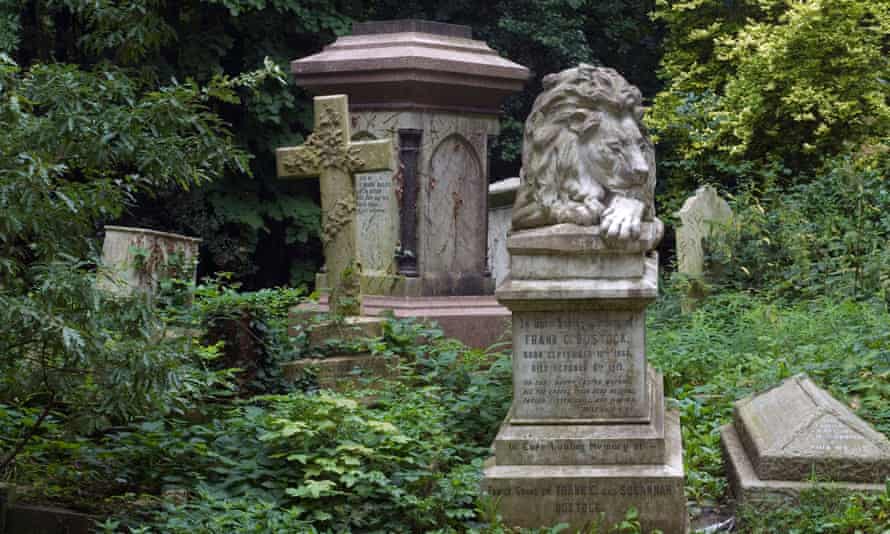
What anyone wants from a graveyard stroll is long gloomy glades of dark trees, from which emerge darkly gothic tombs inscribed with tales of triumph and glory, plus the occasional spectral apparition that zooms forward towards your jugular and hisses, in the case of Abney: “There’s no drink as good as fizz, fizz, fizz. I’ll drink every drop there is, is, is.”
Fear not, that will be the ghost of George Leybourne, AKA Champagne Charlie. Abney specialises in music hall stars, but it also appears in Amy Winehouse’s video for Back to Black. The spot where the film-makers dug a fake grave in the grass for Amy to throw her white roses remains bare to this day.
Accommodation: A lovely pub with rooms, the Rose and Crown, is a five-minute walk. Rooms from £144.
Arnos Vale Cemetery, Bristol

One rarely considers that graveyards can also die, but Arnos Vale came pretty close until local residents managed to save it in 2003. The 45-acre site is a wonderful treasure trove of architecture and ambience, plus several supposed ghosts. Look out for the mausoleum of Ram Mohun Roy, scholar and envoy of the Mughal emperor, who died in Bristol in 1833. His legacy as the father of a cultural renaissance has made his elegant grave a site of pilgrimage.
Accommodation: It’s a two-mile walk, but stay in an Airstream-style caravan parked on a roof at Brooks Guesthouse. From £119.
Key Hill Cemetery, Birmingham
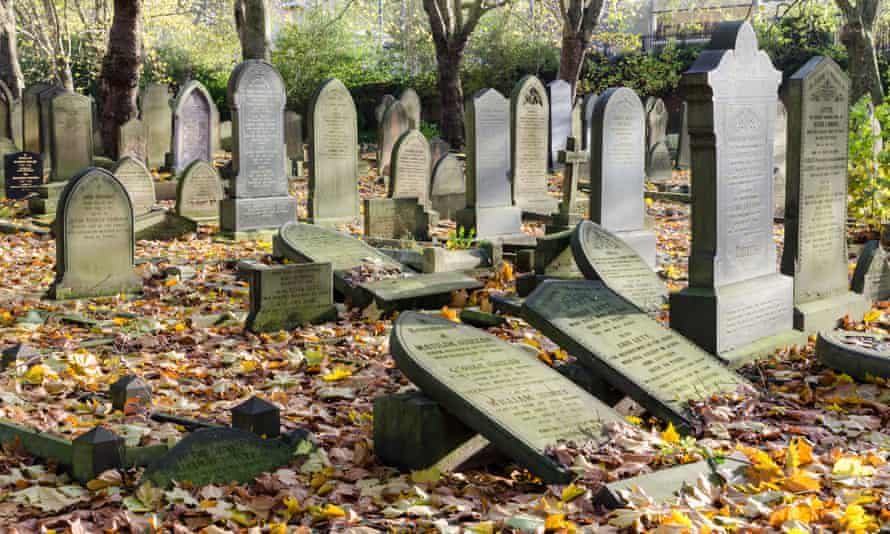
Every cemetery should have a place where you stand and contemplate the sheer staggering genius of previous generations. Key Hill, in Birmingham’s Jewellery Quarter, certainly does. The graveyard was begun in 1836 and later augmented by its near neighbour Warstone Lane (which is a short walk away and well worth a visit, too). In autumn, when the leaves have fallen and a late sun cuts a swathe through the trees, it is an atmospheric spot in the heart of the city. Search out the grave of Joseph Chamberlain. Is he the greatest here? No – what about Harriet Martineau, the social theorist? Not she. We are talking about someone far more exalted: Alfred Bird, inventor of custard powder. Has civilisation improved since that giant leap forward in 1837? Not one spoonful.
Accommodation: Stylish Saint Pauls House is a 20-minute walk away. Rooms from £101.
York Cemetery
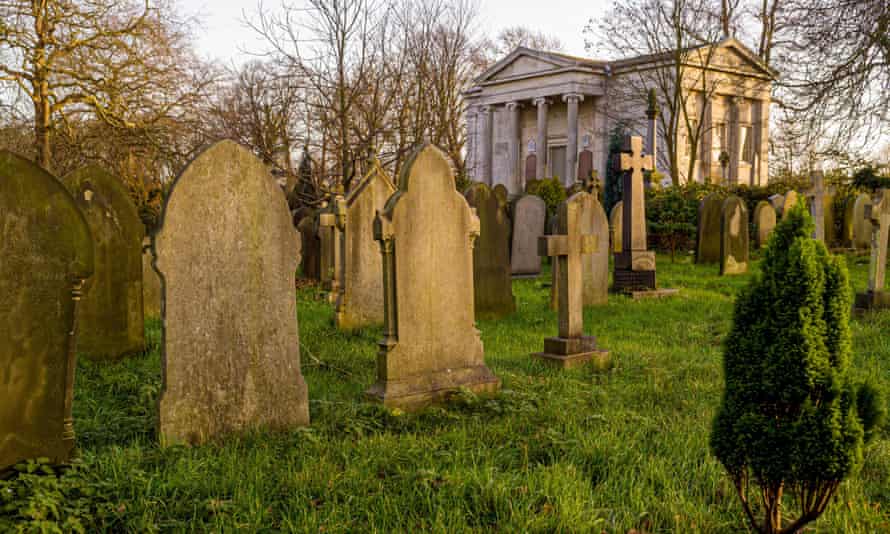
We all love a good inscription, but the Victorian era often disappoints with pious platitudes. Alfred Bird, for example, gets: “He was an earnest student of the Bible”. What about “revolutionised apple pie”? Fortunately York Cemetery seems to specialise in unexpected epitaphs, for example: “John Severs d.1893. A quiet life he lived, he left no stain. Free from enthusiasm, yet free from blame.” The graveyard is full of wonderful headstones, including many descriptive tributes to veterans of 19th-century wars and an astonishing number of people killed in railway accidents.
Accommodation: For a group treat, try the super cool Parisi. Sleeps 8 from £500. On a budget go YHA. Rooms from £39.
St James’s Cemetery, Liverpool
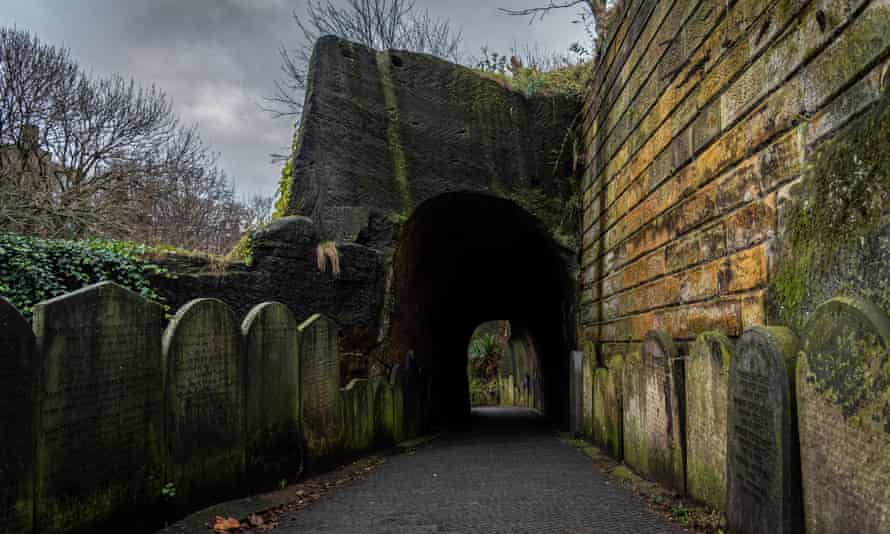
For the first person ever to be killed by a train, however, you have to visit St James’s Cemetery in Liverpool. This fine graveyard in the city centre is best started with a quick walk through “the tunnel”, a sombre cavern lined with gravestones, and, according to legend, the nightly home of sprites and hobgoblins. In the shadow of Liverpool Cathedral lies William Huskisson, tragically run over by Robert Stephenson’s Rocket in 1830: the earliest known railway fatality. Reputedly stuffed with vampires, ghouls and ghosts, the cemetery is almost certain to deliver a successful encounter.
Accommodation: A 10-minute walk down Duke Street gets you to Mrs Blodget’s Guesthouse. Rooms from £169
St Patrick’s Chapel, Heysham, near Morecambe
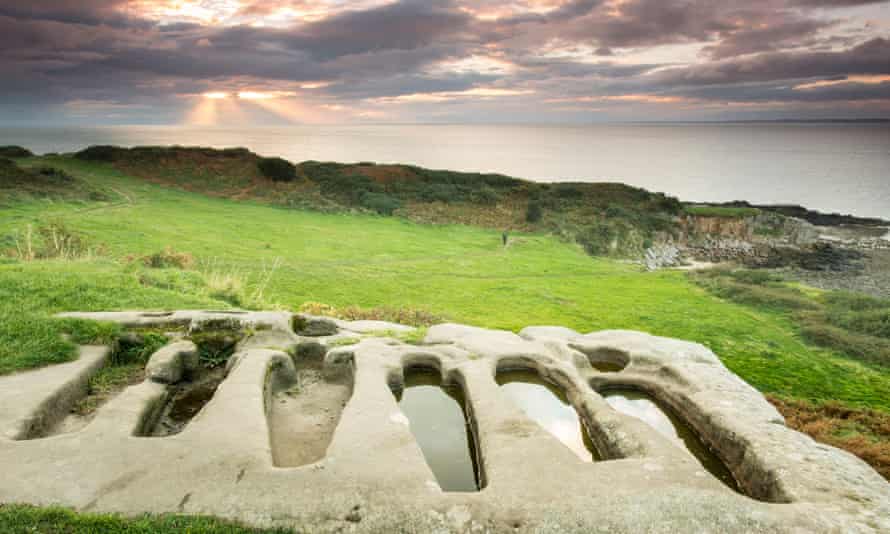
No ghosts at St Patrick’s, only an eerie sense of shifting time and tide. Located on a headland south of Morecambe, there has been a Christian presence here since Saint Patrick was reputedly shipwrecked nearby in the 5th-century. Dug into a swathe of bedrock overlooking the sea are six well-preserved graves, an evocative last resting place with its vast panoramas over Morecambe Bay to the distant hills of Cumbria.
Accommodation: The Port House is a mile down the coast from St Patrick’s. Rooms from £65.




